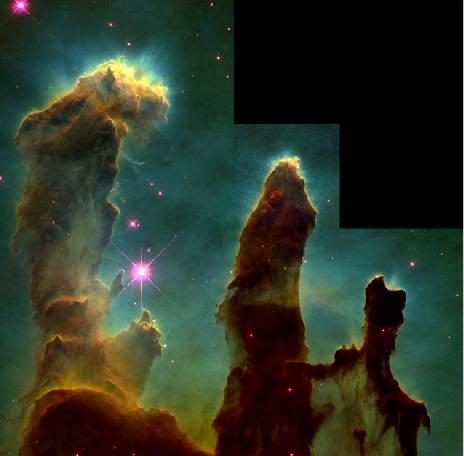Install the app
How to install the app on iOS
Follow along with the video below to see how to install our site as a web app on your home screen.

Note: This feature currently requires accessing the site using the built-in Safari browser.
-
New here? Register here now for access to all the forums, download game torrents, private messages, polls, Sportsbook, etc. Plus, stay connected and follow BP on Instagram @buckeyeplanet and Facebook.
You are using an out of date browser. It may not display this or other websites correctly.
You should upgrade or use an alternative browser.
You should upgrade or use an alternative browser.
Do you believe in intelligent life elsewhere in the Universe?
- Thread starter Thump
- Start date
scooter1369
HTTR Forever.
Guess you didn't. Enjoy. Great pics and links to some great information.Oh boy... looks like I will be spending more than a little time there checking that stuff out.
They are currently saying that about 35% of all stars have a planet of some sort. Likely Gas Giants or "Super Earths" that orbit them.
Astronomers have identified hundreds of extra-solar planets in the last couple of years,
Upvote
0
Guess you didn't. Enjoy. Great pics and links to some great information.
They are currently saying that about 35% of all stars have a planet of some sort. Likely Gas Giants or "Super Earths" that orbit them.
Astronomers have identified hundreds of extra-solar planets in the last couple of years,
Yeah, never seen that site before.. Get most my Astronomy fix Tuesdays on the Science Channel.
I'd say 35% of all stars have planets that we can dectect. I think the more likely scenario is every star (or, nearly every star) has a system of planets, or at least something orbiting it. Assuming, of course, that there is nothing particularly irregular about this solar system and that stars - regardless of size - all tend to form in the same (or similar way)... in other words, I doubt that a Blue Supergiant like Rigel, for example, doesn't have planets simply because it's enormous. I figure it's got pleanty of junk orbiting it, since it -like every other star - was born in a cloud of gas and dust.
Upvote
0
scooter1369
HTTR Forever.
Again, enjoy. Its a great site.Excellent link. Now I have a lot more to read during down time at work. Thank you very much.
Upvote
0
scooter1369
HTTR Forever.
I do wonder about double stars like Alberio having planets. The gravity of two seperate stars pulling on a planet would reak havoc, wouldn't you think?Yeah, never seen that site before.. Get most my Astronomy fix Tuesdays on the Science Channel.
I'd say 35% of all stars have planets that we can dectect. I think the more likely scenario is every star (or, nearly every star) has a system of planets, or at least something orbiting it. Assuming, of course, that there is nothing particularly irregular about this solar system and that stars - regardless of size - all tend to form in the same (or similar way)... in other words, I doubt that a Blue Supergiant like Rigel, for example, doesn't have planets simply because it's enormous. I figure it's got pleanty of junk orbiting it, since it -like every other star - was born in a cloud of gas and dust.

Upvote
0
Yeah, but it occurs to me Scoot that one of those stars is simply a Jupiter than didn't fail to become a star (as did Jupiter)
Although, in so doing, it may have eaten up otehr planets - or kicked them out of the solar system altogeher.
Although, in so doing, it may have eaten up otehr planets - or kicked them out of the solar system altogeher.
Upvote
0
scooter1369
HTTR Forever.
It would suck to be the planet that sling shot out of the soler system.Yeah, but it occurs to me Scoot that one of those stars is simply a Jupiter than didn't fail to become a star (as did Jupiter)
Although, in so doing, it may have eaten up otehr planets - or kicked them out of the solar system altogeher.

Upvote
0




